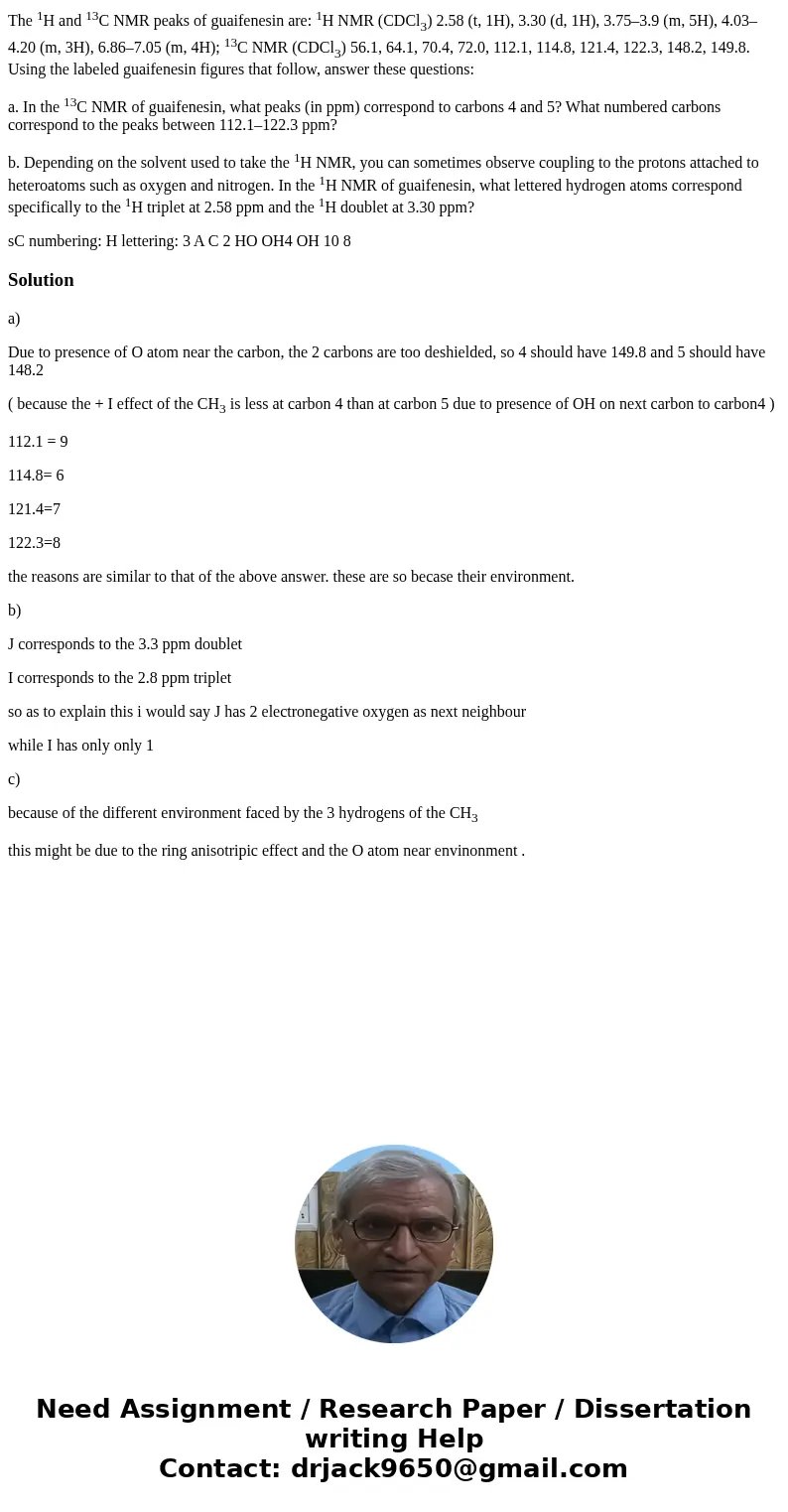The 1H and 13C NMR peaks of guaifenesin are 1H NMR CDCl3 258
The 1H and 13C NMR peaks of guaifenesin are: 1H NMR (CDCl3) 2.58 (t, 1H), 3.30 (d, 1H), 3.75–3.9 (m, 5H), 4.03–4.20 (m, 3H), 6.86–7.05 (m, 4H); 13C NMR (CDCl3) 56.1, 64.1, 70.4, 72.0, 112.1, 114.8, 121.4, 122.3, 148.2, 149.8. Using the labeled guaifenesin figures that follow, answer these questions:
a. In the 13C NMR of guaifenesin, what peaks (in ppm) correspond to carbons 4 and 5? What numbered carbons correspond to the peaks between 112.1–122.3 ppm?
b. Depending on the solvent used to take the 1H NMR, you can sometimes observe coupling to the protons attached to heteroatoms such as oxygen and nitrogen. In the 1H NMR of guaifenesin, what lettered hydrogen atoms correspond specifically to the 1H triplet at 2.58 ppm and the 1H doublet at 3.30 ppm?
sC numbering: H lettering: 3 A C 2 HO OH4 OH 10 8Solution
a)
Due to presence of O atom near the carbon, the 2 carbons are too deshielded, so 4 should have 149.8 and 5 should have 148.2
( because the + I effect of the CH3 is less at carbon 4 than at carbon 5 due to presence of OH on next carbon to carbon4 )
112.1 = 9
114.8= 6
121.4=7
122.3=8
the reasons are similar to that of the above answer. these are so becase their environment.
b)
J corresponds to the 3.3 ppm doublet
I corresponds to the 2.8 ppm triplet
so as to explain this i would say J has 2 electronegative oxygen as next neighbour
while I has only only 1
c)
because of the different environment faced by the 3 hydrogens of the CH3
this might be due to the ring anisotripic effect and the O atom near envinonment .

 Homework Sourse
Homework Sourse